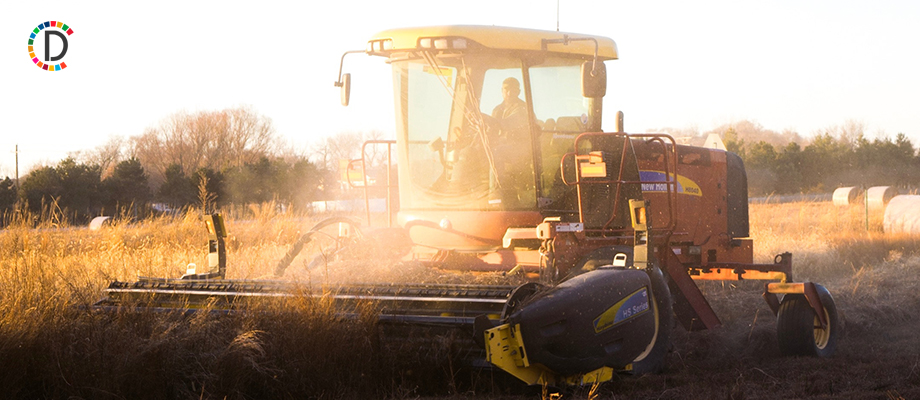Antimicrobial Resistance Crisis: Poultry Environment Poses Grave Threat
As the country intensifies its animal farming practices to meet food insecurity, there are growing concerns about the poultry sector emerging as a new hotspot for antimicrobial resistance.AMR can spread through various routes, including contact with animals or their products and contaminated food, thereby increasing the risk of infection for veterinarians, farmers, and food handlers.

- Country:
- India
A new study has found high levels of antimicrobial resistance (AMR) in the poultry farm environment in Tamil Nadu and Andhra Pradesh, raising serious concerns about the impact on human health. Researchers from NGOs Toxics Link and World Animal Protection collected 14 poultry litter and groundwater samples from six poultry farms for the study. Eleven of these samples showed an alarming presence of antimicrobial resistance genes (ARG) against 15 important antibiotics, including glycopeptides, carbapenems, and macrolides.
Surveys conducted by Toxics Link found that poultry farmers are using antibiotics indiscriminately due to a general lack of awareness and understanding of the possible consequences. Despite the recommendation of the Bureau of Indian Standards to not use antibiotic growth promoters (AGPs) in poultry feeds, these continue to be available in the markets and used by poultry farmers. Colistin, a last-resort antibiotic drug for treating multidrug-resistant infections, banned for use in food-producing animals by the Union Ministry of Health in 2019, is still being sold through online platforms.
ARGs are genetic facilitators of AMR which causes bacteria, viruses, fungi and parasites to no longer respond to antimicrobial medicines. Although naturally occurring, ARGs in the environment have increased in recent years due to anthropogenic activities leading to overuse and misuse of antimicrobials across different sectors. This has led to diseases such as pneumonia, gonorrhoea, post-operative infections, HIV, tuberculosis, and malaria becoming increasingly untreatable. According to the World Health Organization (WHO), at least seven lakh people die each year due to drug-resistant diseases, including more than two lakh people who die from multi-drug-resistant tuberculosis.
India accounts for three per cent of the global consumption of antimicrobials in food animals and has one of the highest intensity of antimicrobial usage (AMU) rates in the livestock sector. As the country intensifies its animal farming practices to meet food insecurity, there are growing concerns about the poultry sector emerging as a new hotspot for antimicrobial resistance.
AMR can spread through various routes, including contact with animals or their products and contaminated food, thereby increasing the risk of infection for veterinarians, farmers, and food handlers. Even waste from poultry farms, such as litter used as fertilizer in agriculture or feed in aquaculture, can cause the spread of AMR across different sectors.
Gajendra Sharma from World Animal Protection said, "Poor animal husbandry practices, especially in poultry farming, significantly contributed to antibiotic overuse. Farmers often administer antibiotics preventatively and for disease treatment, resulting in high levels of antibiotic residues in both food products and waste. ''Addressing the root cause of antibiotic misuse in the animal farming sector, especially poultry, is critical for controlling and reducing AMR. World Animal Protection strongly advocates for the effective integration and implementation of animal welfare into National and State Action plans to combat AMR. The time to act is now to safeguard the health and welfare of animals, humans, and the planet,'' he said.
In 2015, the World Health Assembly adopted a global action plan on antimicrobial resistance to optimise antimicrobial use, increase awareness, reduce the incidence of infections, and build sustainable practices that align with the reduction in overall antimicrobial use. Consequently, India also developed its own Action Plan on AMR in 2017, emphasising building surveillance networks to control the use of antibiotics across sectors.
According to Vijay Pal Singh, Principal Technical Officer at CSIR-IGIB, there is a need to work closely with all stakeholders and to develop sound protocols and control measures for arresting this trend of AMR.
Satish Sinha, Associate Director of Toxics Link, said India is highly vulnerable to risk related to AMR and there is a need to revisit the implementation of the national action plan. The country needs to identify potential hot spots, set up robust monitoring and surveillance systems to restrict the overuse of antibiotics across all sectors and adopt environmentally sound waste and effluent management practices, he said.
(This story has not been edited by Devdiscourse staff and is auto-generated from a syndicated feed.)
ALSO READ
Reviving Rivers: A Holistic Vision for Karnataka's Environment
Delhi covered in layer of smog, situation likely to improve with rise in wind speed: Environment Minister Gopal Rai.
Nicola Willis to Visit Antarctica, Strengthening Scientific and Environmental Commitment
Delhi govt will take all steps necessary if pollution situation worsens due to adverse weather conditions: Environment Minister Gopal Rai.
Delhi's Air Quality Crisis: BJP vs. AAP on Environmental Action










